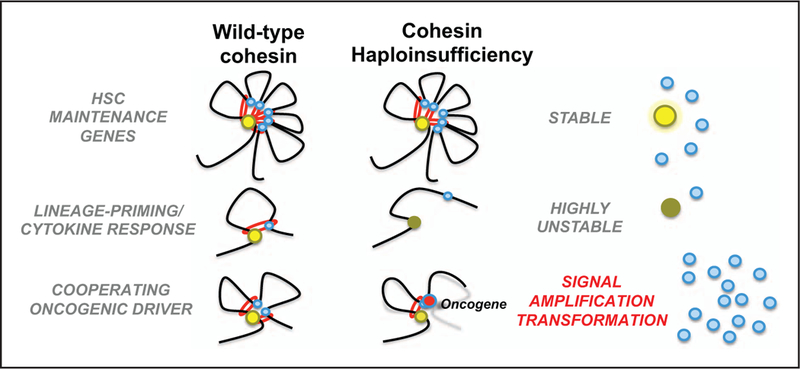FIGURE 1.

Proposed mechanism for tumor-suppressor function of cohesin in cancer. Complex chromatin structure at stem-maintenance genes either have increased affinity for remaining cohesin or have redundant structural stability and maintain expression. Genes essential for lineage priming, differentiation, and environmental response are highly sensitive and expression is impaired. Abnormal HSC maturation likely contributes to a myelodysplasia phenotype and with cooperating mutations leading to an overall relaxed chromatin state, which can amplify the signal of an oncogene-addicted clone resulting in clonal expansion and transformation.
